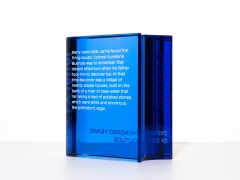Font Sunday: the beauty of our world's shop fronts exposed on Twitter
From Tampa to Taipei, Guatemala City to Kuala Lumpur and Greece, over 1.8K shop front entries were sent in from followers around the world for this week's Font Sunday twitterfest by Design Museum.
Hosted by Georgios Makkas, who has photographed old shop fronts in Greek cities since 2012 the entries showed the beauty of signage and typography all over the world.
Have you been following today's #FontSunday, guest-hosted by greek photographer, Georgios Makkas? | We are looking for forgotten or old storefronts from your own country / city.
— Design Museum (@DesignMuseum) July 26, 2020
Image | A closed down dairy shop in Patission street, Athens. pic.twitter.com/4Krx81XCdG
A storefront or shop front functions to attract visual attention to a business and its merchandise so it's vital to its existence.
Before the middle of the 19th century, shop fronts did not have large display windows, but often included features such as awnings and bay windows to attract the attention of passersby.
Modern storefronts with display windows developed at mid-century after architectural cast iron became widely available and glass manufacturers began producing large panes of glass at relatively low cost.
The first display windows in shops were installed in the late 18th century in London, where levels of conspicuous consumption were growing rapidly.
Retailer Francis Place was one of the first to experiment with this new retailing method at his tailoring establishment in Charing Cross, where he fitted the shop-front with large plate glass windows. Although this was condemned by many, he defended his practice in his memoirs, claiming that he "sold from the window more goods...than paid journeymen's wages and the expenses of housekeeping."
Explore more entries here.
Tags/ typography, signage, design museum, font sunday, shop front







































